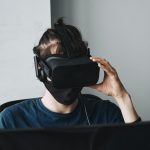VR is becoming recognised for its ability to inject feelings of joy and happiness to senior communities around the world. Providing the elderly a much deserved sense of escapism from the humdrum of everyday retired life. It really is as sweet as it sounds. This article will give you a realistic insight into VR for Aged Care residents.
Variety of Travel Destinations to go to
VR fills time by relishing the best and most favourite destinations of popular countries. It puts elderly in the shoes of a tourist enabling exploration of foreign lands and embracing the beauty of several places on the map. Imagine waking up and looking forward to a virtual tour of the fascinating Egyptian Pyramids. It is magic in the eyes of the elderly, especially if there is a country one always has wanted to visit, but could not travel.
Some VR softwares can locate an elderly person’s childhood home, the school they went to, or the place in which they tied the knot. It enables the elderly to bring back warm memories that took place early on in their lives by placing them into these exact places.
Comfort and joy in rediscovering hobbies and talents
Just by undergoing twenty minutes of a VR simulation an elderly person can inject a sense of joy and fun into their day. Some seniors find that experiencing an Opera show or learning about renaissance art has an uplifting affect on their mood. Whilst others would say being immersed in a tranquil rainforest or a stunning beach is highly enjoyable as it takes them back to memories of traveling and being able to visit such environments.
The historically inclined can experience simulations that allow elderly to “jump into” famous artworks in 360 degree view. Whereas the adventure junkies, or ex-mountain climbers can speed off on a VR mountain climbing track; and former artists can pick up a paintbrush and canvas again through VR art.
Beyond Entertainment
Now let’s move onto the emotional and psychological impacts of VR technology. One of the great benefits is that VR can prompt communication and increase sociability among residents, in effect reducing feelings of loneliness. This is because simulations are able to take place in a group setting. After a VR session, the gateway opens to discuss shared experiences of VR and emphasise the enjoyment it brought about, much the same way a real life group adventure would spur on a great discussion on the shared experience.
Mapleway Senior Living, in the US, reported that VR has had a great impact on care residents. If a resident is easily agitated, the team will add VR into the resident’s care plan and use VR as a distraction mechanism at the onset of an emotional outburst. In this way, it is a tool for therapy intervention, providing a sense of calm in the storm.
On the contrary, physical therapists are even taking notice of using VR to encourage the elderly to exercise (yes, VR exercise does exist!). A little physical activity can help residents at age care centres to reduce bodily aches and pains, as exercising muscles that aren’t often put to use, will waken up those muscles and have them working again.
This doesn’t mean doing a half hour strenuous cardio workout, but it could involve something as simple as being equipped to an exercise bike, and using a VR headset ride along a beautiful scenic landscape.
It is truly exciting to see VR is reviving senior living communities. Finally a technology used to help counteract loneliness in the elderly, and generate a new light on life. And while it may be normal to avoid the thought of becoming old, it is reassuring to think we can keep doing the things we love doing just in a more unique way. We can look forward to a fun and eventful retirement with the aid of VR tech- life is good.
Written by Lauren Tizzone
Similar articles to check out:







